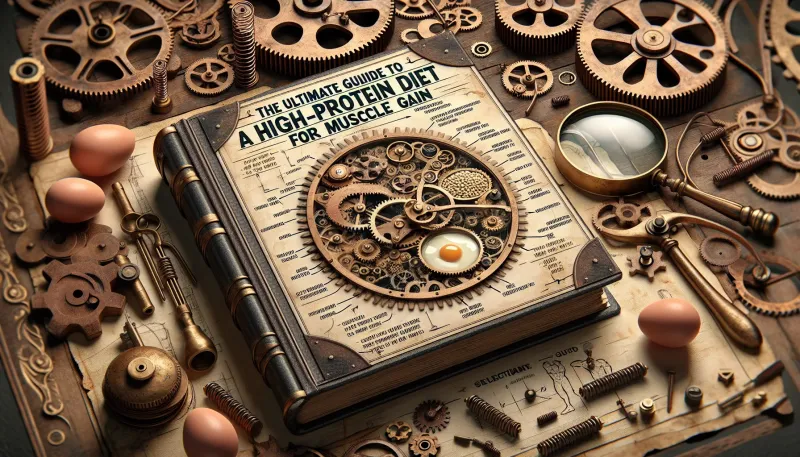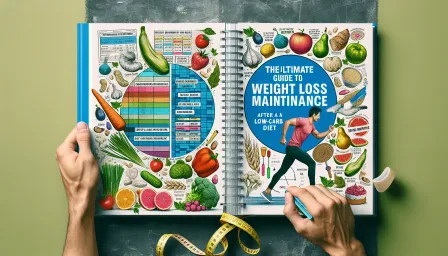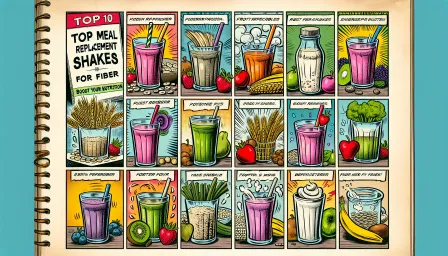The Ultimate Guide to a High-Protein Diet for Muscle Gain

Discover everything you need to know about a high-protein diet for muscle gain. This comprehensive guide covers essential tips, benefits, and meal planning strategies.
A high-protein diet is often touted as the go-to nutritional strategy for building muscle. But what does it really take to harness the power of protein for muscle gain? This comprehensive guide will provide you with all the information you need to optimize your diet for muscle growth, backed by scientific facts, practical tips, and actionable strategies.
Understanding the Role of Protein in Muscle Building
Protein is a macronutrient essential for muscle repair and growth. When you engage in strength training or any form of exercise that stresses the muscles, tiny tears occur in the muscle fibers. Protein helps to repair these tears, leading to muscle growth and increased strength over time.
Why Protein is Crucial
Protein provides the building blocks—amino acids—that your body needs to grow and repair muscle tissues. Without sufficient protein, your body cannot effectively repair these tissues, making muscle gain harder and delaying recovery.
How Much Protein Do You Need?
The amount of protein required varies based on factors such as age, gender, and activity level. However, a common guideline is to consume 0.8-1 gram of protein per pound of body weight. This can go up to 1.2 grams for athletes and those intensely involved in muscle-building activities.
Benefits of a High-Protein Diet for Muscle Gain
Enhanced Muscle Repair and Growth
A high-protein diet ensures that your body has ample amino acids to facilitate quick and efficient muscle repair and growth. This leads to faster recovery times and more significant muscle gains.
Increased Metabolic Rate
Protein has a higher thermic effect compared to fats and carbohydrates. This means your body uses more energy to digest and process protein, leading to a higher metabolic rate and potentially more fat loss alongside muscle gain.
Improved Satiety and Weight Management
High-protein diets can help you feel fuller for longer periods, reducing overall calorie intake and aiding in weight management. Managing your weight effectively is crucial for muscle definition and overall health.
Best Sources of Protein for Muscle Gain
Animal-Based Proteins
- Chicken: A lean source of high-quality protein that is versatile and easy to incorporate into meals.
- Beef: Rich in essential amino acids and also provides important micronutrients like iron and zinc.
- Fish: Offers protein along with omega-3 fatty acids, which have anti-inflammatory properties beneficial for muscle recovery.
- Eggs: Contain high-quality protein and essential vitamins such as B12 and D.
- Dairy: Options like milk, cheese, and yogurt provide both protein and calcium.
Plant-Based Proteins
- Legumes: Beans, lentils, and chickpeas are excellent sources of plant protein and fiber.
- Nuts and Seeds: Almonds, chia seeds, and flaxseeds offer protein along with healthy fats and essential nutrients.
- Tofu and Tempeh: Soy-based proteins that are highly versatile and can be used in various dishes.
- Quinoa: A complete protein that contains all nine essential amino acids, making it ideal for muscle gain.
Meal Planning Tips for a High-Protein Diet
Breakfast
Start your day with a protein-rich breakfast to kickstart muscle protein synthesis. Options include:
- Scrambled eggs with spinach and feta
- Greek yogurt with berries and almonds
- Protein smoothie with whey protein, banana, and almond milk
Lunch
For lunch, focus on lean protein sources combined with complex carbohydrates and vegetables. Examples:
- Grilled chicken salad with quinoa and avocado
- Beef stir-fry with bell peppers and brown rice
- Lentil soup with whole-grain bread
Dinner
Dinner should continue to prioritize high-quality protein sources alongside healthy fats and vegetables. Ideas include:
- Baked salmon with asparagus and sweet potato
- Turkey burgers with a side of roasted vegetables
- Tofu stir-fry with broccoli and snap peas
Snacks
Incorporate protein into your snacks to maintain a steady supply of amino acids throughout the day. Snack ideas:
- Cottage cheese with pineapple
- Hummus with carrot sticks
- Protein bars or shakes
Common Misconceptions and FAQs
Myth: A High-Protein Diet is Only for Bodybuilders
While bodybuilders and athletes often adopt high-protein diets to maximize muscle growth, anyone engaging in regular physical activity can benefit. Protein aids in muscle repair, recovery, and growth, regardless of your fitness level.
Myth: All Proteins are Created Equal
Not all protein sources provide the same quality of amino acids. Prioritize complete proteins—those containing all essential amino acids—such as meat, fish, dairy, and certain plant-based sources like quinoa.
FAQ: Can I Consume Too Much Protein?
Excessive protein intake can strain the kidneys and liver over time and may lead to nutrient imbalances. It’s essential to balance your diet with carbohydrates and fats to support overall health.
Conclusion
Adopting a high-protein diet for muscle gain involves understanding the role of protein in muscle repair and growth, recognizing the best protein sources, and effectively planning your meals to meet your dietary needs. Whether you’re an athlete or simply someone looking to improve their muscle mass, this guide provides a comprehensive roadmap to achieving your muscle-building goals. Always consult with a healthcare provider or dietitian to tailor any diet plan to your specific needs.



























